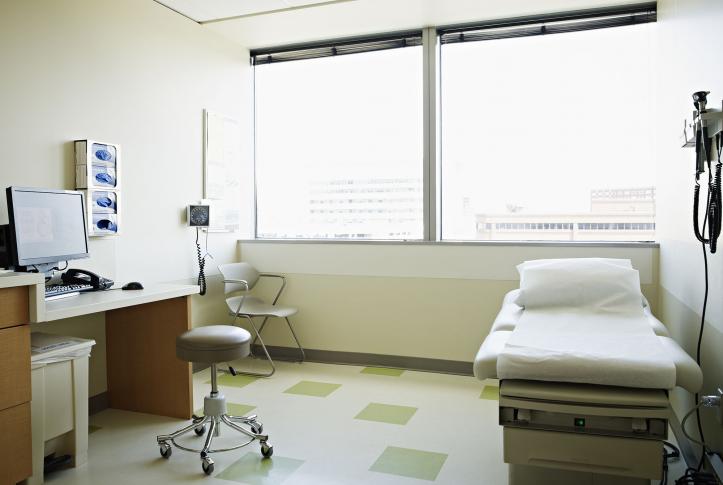A new report, which describes visit trends through the end of 2020, is available here.


Although visits to ambulatory care practices have rebounded since early April after a decline of nearly 60 percent, visits are still roughly a third lower than they were before the pandemic
The rebound in provider visits is due to more in-person appointments rather than more telemedicine visits
Although visits to ambulatory care practices have rebounded since early April after a decline of nearly 60 percent, visits are still roughly a third lower than they were before the pandemic
The rebound in provider visits is due to more in-person appointments rather than more telemedicine visits
A new report, which describes visit trends through the end of 2020, is available here.
The COVID-19 pandemic has dramatically changed how outpatient care is delivered in health care practices. To decrease the risk of transmitting the virus to either patients or health care workers within their practice, providers are deferring elective and preventive visits, such as annual physicals. When possible, they are also converting in-person visits to telemedicine visits. For their part, many patients are also avoiding visits because they do not want to leave their homes and risk exposure. Also influencing both provider and patient behavior are the evolving local and state recommendations restricting travel and nonessential services.
On April 23, we published findings demonstrating that early in the pandemic the number of visits to ambulatory care practices declined by nearly 60 percent. In this new post, we update those data through May 16 and add new results showing how the decline varies by the size of the provider organization.
Knowing what impact the COVID-19 pandemic is having on office visits helps us to address several ongoing questions:
Researchers at Harvard University and Phreesia, a health care technology company, analyzed data on changes in visit volume for the more than 50,000 providers that are Phreesia clients. During the study period (mid-February to mid-May) there were more than 12 million visits. The following charts illustrate how declines in visits vary by patient type, geographic area, clinical specialty, and size of provider organization. Details on data sources, analyses, and study limitations are available at the bottom of this post.
Phreesia is a health care technology company that helps ambulatory practices with the patient intake process including registration, insurance verification, patient questionnaires, patient-reported outcomes, and payments. The data reported here come from Phreesia’s clients, which include more than 1,600 provider organizations representing more than 50,000 providers across all 50 states. In a typical year, these provider organizations have more than 50 million outpatient visits, or 1 million visits a week. The provider organizations include independent single-provider practices, multispecialty groups, Federally Qualified Health Centers, and large health systems. Of all visits in a typical week before the pandemic, 47 percent are with primary care physicians (adult and pediatric) and the other 54 percent of visits are spread across more than 25 specialties. Visits with nurse practitioners and physician assistants are included under these 25 other specialties.
The data come from several sources at the practices: 1) practice management/scheduling software; 2) check-in information submitted via patients on the Phreesia platform, such as age; and 3) selected data from the electronic health record, such as problem lists.
Visits were captured from February 1 through May 17, 2020. A visit was counted if it was in the practice’s scheduling software and the patient was “checked in.” A visit is considered checked in when either the patient or someone at the practice (such as a nursing assistant) filled in the necessary information using the Phreesia platform and the patient was ready to see the provider. Telemedicine visits were identified in the scheduling software based on the appointment type or location. Telemedicine includes both telephone and video visits. The data exclude any new Phreesia clients who joined after February 15th, 2020.
All data were analyzed by Phreesia staff in consultation with Harvard researchers. Results were calculated and shared with Harvard researchers in aggregate form as percentage drops from baseline. The baseline for visits was defined as the week of March 1 to 7; a representative week among the practices prior to effects of the pandemic. Visits on holidays (President’s Day, February 17, and Good Friday, April 10) were excluded.
Provider organization size is based on the number of independent clinicians and includes physicians, nurse practitioners, psychologists, physician assistants, and social workers. The organization is the financial entity that contracts with Phreesia. It can be a single clinic or be a large health care system that includes numerous clinical sites.
The data have limitations. As with any convenience sample of practices, the patterns we observe may not be representative of all practices nationally or regionally. Unscheduled same-day and walk-in visits are typically captured in the scheduling software, but it is possible some unscheduled telephone encounters may not be captured if they were not recorded in the scheduling software. Workflow and documentation practices have likely shifted during the pandemic. In addition, early in the pandemic, providers were still creating processes to designate telemedicine visit types in their scheduling software. As a result, the fraction of all visits identified as telemedicine may be underestimated.
Publication Details
Date
Citation
Ateev Mehrotra et al., “The Impact of the COVID-19 Pandemic on Outpatient Visits: A Rebound Emerges,” To the Point (blog), Commonwealth Fund, updated May 19, 2020. https://doi.org/10.26099/ds9e-jm36
Area of Focus